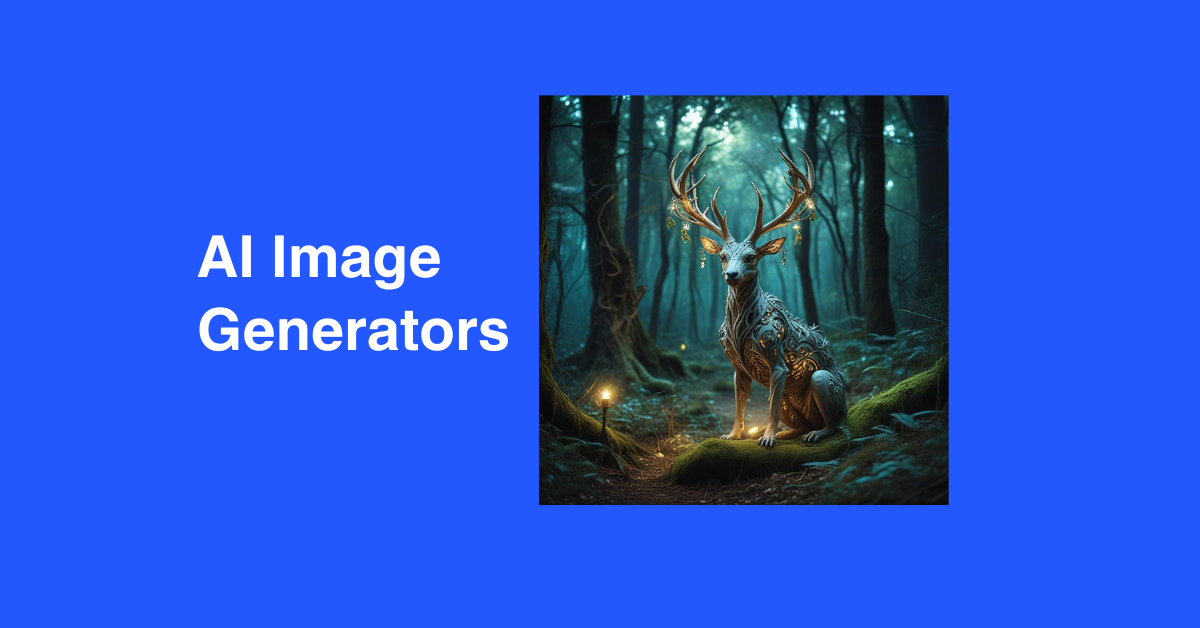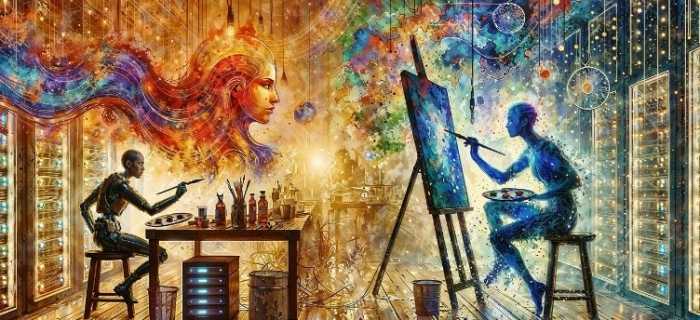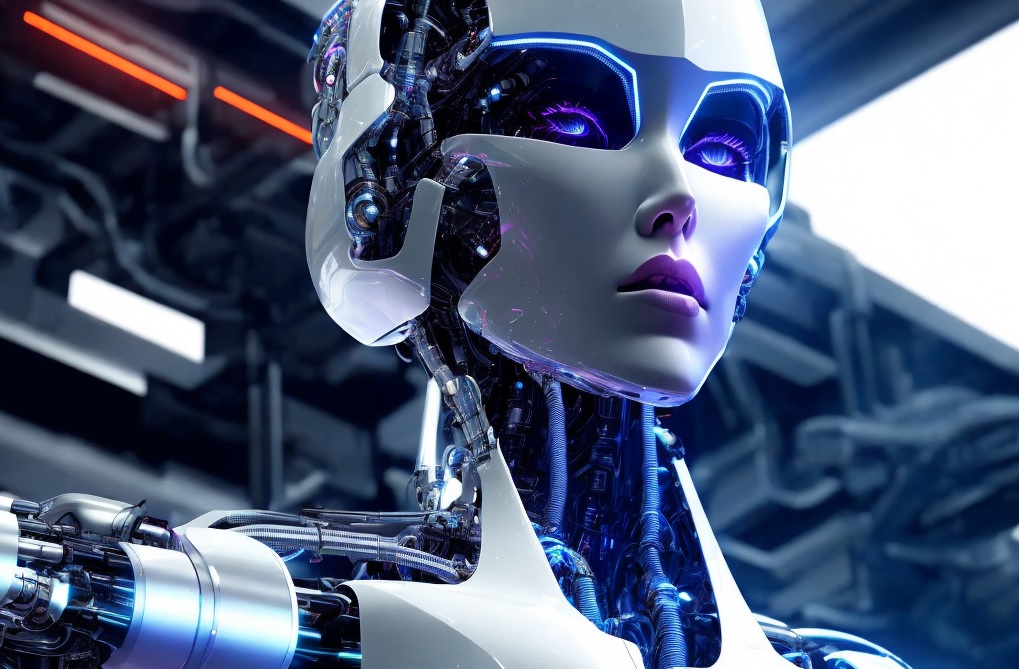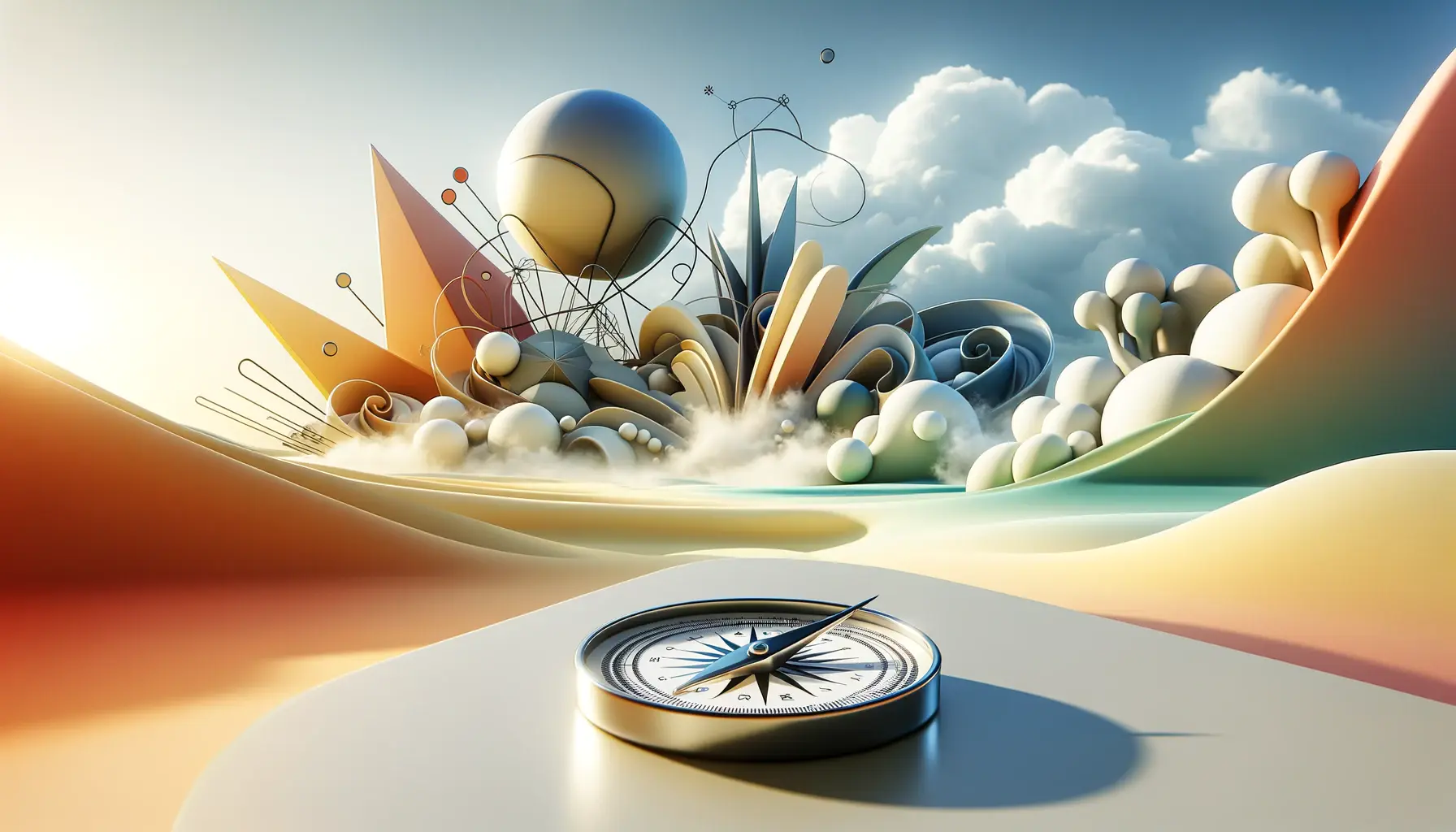
AI Image Generators A New Era of Creativity
- Image Generators
- November 14, 2024
- No Comments
In the digital age, creativity is no longer confined to traditional mediums. With the advent of technology, especially artificial intelligence, new tools are emerging that challenge our understanding of art and creativity. One such innovation is the AI image generator. This powerful tool enables users to create stunning images from simple text descriptions, opening up avenues for artistic expression that were previously unimaginable. As we delve deeper into the world of AI image generators, we will explore how they work, their impact on the creative industry, ethical considerations, and much more.
AI Image Generators: A New Era of Creativity

The Rise of AI in Art and Design
The intersection of artificial intelligence and art has been steadily gaining momentum over the past few years. Artists are leveraging AI algorithms not just as mere tools but as collaborative partners in their creative journeys.
The emergence of AI image generators has led to a whole new genre of art that blurs the lines between human creativity and machine learning. For example, platforms like DALL-E and Midjourney have gained widespread attention for their ability to generate intricate images based on user prompts. This has prompted artists to rethink their roles—are they mere creators or facilitators of a dialogue between technology and humanity?
Moreover, the accessibility of these tools means that traditional boundaries of art are being challenged. With just a few clicks, anyone can create artwork that would take hours or days for a trained artist to produce. This shift raises questions about authorship, originality, and the essence of creativity itself.
How AI Image Generators Foster Collaboration
One of the most exciting aspects of AI image generation is its capacity to foster collaboration across various disciplines. Writers, marketers, and designers are finding innovative ways to use AI-generated imagery to complement their work.
Imagine an author crafting a fantastical story who can instantly visualize characters or settings using an AI generator. This synergy between text and visuals enriches the narrative experience and allows for a more immersive storytelling approach. Similarly, graphic designers are using AI-generated images as part of their design toolkit, enhancing projects with unique visuals that might not have been possible otherwise.
Furthermore, this collaborative approach extends beyond individual projects. Creative teams can brainstorm ideas around AI-generated concepts, creating a dynamic environment where different perspectives converge. This collaboration may lead to innovative solutions and breakthroughs that wouldn’t occur in isolated creative processes.
Reshaping Cultural Narratives
AI image generators also have the potential to reshape cultural narratives. They enable creators to portray diverse perspectives and experiences that reflect the multifaceted nature of society. By providing users with the ability to depict scenes, characters, or events that resonate with underrepresented communities, AI tools can help diversify the visual landscape.
This aspect is particularly relevant in discussions surrounding representation and inclusivity in art. As AI becomes more integrated into creative practices, it opens the door for increased visibility of voices that have historically been marginalized. By harnessing the power of AI, creators can contribute to broader conversations around culture, identity, and social justice.
How AI Image Generators Work: From Text to Visuals

Understanding how AI image generators function is essential for appreciating their capabilities. At their core, these systems utilize complex algorithms and neural networks to transform textual descriptions into visual representations.
Natural Language Processing and Image Synthesis
To bridge the gap between language and visuals, AI image generators rely on two primary components: natural language processing (NLP) and image synthesis techniques.
NLP enables the AI to comprehend the nuances of human language, allowing it to interpret user inputs effectively. When a user submits a prompt, the AI analyzes the text to grasp the key elements, themes, and emotions conveyed.
Once the text is processed, image synthesis algorithms come into play. These algorithms are trained on vast datasets containing millions of images paired with descriptive text. By referencing this knowledge, the AI generates an image that aligns with the input instructions. This process involves intricate calculations and adjustments, ensuring that the final output meets the user’s expectations in terms of style, composition, and content.
The Role of Training Data
The quality of the generated images largely depends on the dataset used to train the AI model. Diverse and high-quality datasets allow the AI to learn various styles, techniques, and themes. However, this also raises important questions about bias and representation within the training data.
If the dataset lacks diversity or contains biased representations, the resulting images may reflect those shortcomings. For instance, if an AI model is primarily trained on Western art, it may struggle to accurately capture non-Western aesthetics. This limitation underscores the importance of carefully curating and diversifying training datasets to produce equitable and representative outputs.
Challenges in AI Image Generation
Despite the groundbreaking advancements in AI image generation, several challenges remain. One significant hurdle is the potential for misuse. The ease of generating hyper-realistic images poses risks, including misinformation and deepfake technologies.
Moreover, while AI-generated images can be visually captivating, they sometimes lack the emotional depth and context inherent to human-created art. While AI excels at technical execution, it often struggles to convey personal experiences, cultural significance, or nuanced emotions.
These challenges emphasize the need for responsible usage and ongoing discussions around the ethical implications of AI image generators.
Top AI Image Generators: A Comparative Guide

As the popularity of AI image generators continues to rise, numerous platforms have emerged, each offering distinct features and capabilities. In this comparative guide, we’ll explore some of the leading AI image generators available today, highlighting their strengths and weaknesses.
DALL-E 2: Creativity Unleashed
DALL-E 2, developed by OpenAI, has garnered significant attention for its ability to produce imaginative and intricate images from text descriptions.
What sets DALL-E 2 apart is its emphasis on creativity. It can generate surreal compositions, blending elements in unexpected ways. For example, a user might request “a cat wearing a spacesuit,” and DALL-E 2 would craft a whimsical interpretation reflecting that prompt.
While DALL-E 2 excels in creativity, users may find limitations in certain stylistic preferences. Moreover, the platform’s exclusive access model may deter some users from exploring its potential.
Midjourney: Community-Driven Artistry
Midjourney takes a different approach, focusing on community engagement and collaboration. This platform invites users to submit prompts and offers a space for feedback and interaction among artists and enthusiasts.
Midjourney is known for its distinctive aesthetic style, producing images that often reflect dreamlike qualities. Users appreciate the curated nature of the platform, as it fosters a supportive environment for sharing and critiquing work.
However, the reliance on community involvement could lead to varying levels of output quality, as users may have differing artistic sensibilities.
DeepArt.io: Transforming Photos into Masterpieces
DeepArt.io stands out for its ability to transform existing photographs into artistic masterpieces inspired by famous art styles. This platform leverages neural networks to apply the characteristics of renowned artists to user-uploaded images.
This capability allows users to experiment with different artistic styles, embracing the beauty of classic art while infusing personal photographs with a touch of creativity.
However, while DeepArt.io shines in style transfer, it may lack the versatility of text-to-image capabilities found in other generators. Users seeking original compositions may find it less satisfying compared to more comprehensive platforms.
Artbreeder: Collaborative Image Creation
Artbreeder combines AI image generation with user collaboration, enabling individuals to create unique artworks by blending and evolving existing images. This platform emphasizes community contributions, allowing users to modify and remix images collaboratively.
Artbreeder encourages experimentation, making it ideal for those looking to explore variations of a specific concept. The collective effort results in a rich tapestry of creativity, showcasing diverse interpretations of similar themes.
However, the open-ended nature of Artbreeder may leave some users feeling overwhelmed by the myriad possibilities, potentially diluting focus during the creative process.
The Impact of AI Image Generators on the Creative Industry
The arrival of AI image generators is reshaping the creative landscape in profound ways. As industries adapt to this technology, we’re witnessing a transformation in workflows, creative processes, and artistic expression.
Redefining Roles within Creative Teams
One notable impact of AI image generators is the redefinition of roles within creative teams. Traditionally, teams comprised specialists in various fields—graphic designers, illustrators, and copywriters, each contributing their expertise to a project.
With AI image generators, these roles are becoming more fluid. Designers can quickly generate visuals to accompany their ideas, allowing for rapid prototyping and iteration. Writers, too, can visualize concepts, enhancing collaboration and communication within teams.
This shift encourages cross-disciplinary collaboration, fostering an environment where team members with varied skill sets can come together and contribute to a unified vision.
Streamlining Creative Processes
AI image generators streamline creative processes by reducing the time and effort required to produce high-quality visuals. Instead of spending hours or days on design, creators can generate multiple iterations of an idea in minutes.
This efficiency allows for greater experimentation and exploration of different concepts. Creators can quickly test various approaches, helping to refine their vision without the burden of extensive revisions.
As a result, companies can launch marketing campaigns and product designs more swiftly, responding to market demands and trends with agility.
Expanding Access to Creative Tools
Perhaps one of the most significant impacts of AI image generators is their potential to democratize access to creative tools. Individuals who may not have formal training in art or design can now produce compelling visuals, leveling the playing field and allowing a broader range of voices to enter the creative space.
This newfound accessibility opens doors for aspiring artists, entrepreneurs, and non-profit organizations to express themselves visually. Consequently, we are likely to witness an influx of diverse perspectives and stories, enriching the overall creative landscape.
Ethical Considerations of AI Image Generators
As the use of AI image generators becomes more widespread, ethical considerations are paramount. While these tools offer immense potential for creativity and innovation, they also raise critical questions about ownership, authenticity, and societal impact.
Ownership and Copyright Issues
The question of ownership is a pressing concern in the realm of AI-generated art. If an individual utilizes an AI image generator to create a piece, who owns the resulting work?
Traditionally, copyright law grants ownership rights to the creator, but the involvement of AI complicates this framework. Many platforms assert that users retain ownership of the images they generate; however, ambiguities persist regarding any proprietary claims held by the AI developers themselves.
This ambiguity creates uncertainty for creators, especially when it comes to commercializing AI-generated content. The legal landscape surrounding AI-generated works remains largely uncharted, necessitating continued dialogue and potential reforms.
Authenticity and Artistic Integrity
Another ethical consideration revolves around authenticity and artistic integrity. As the lines between human-generated and AI-generated art blur, questions arise about the value of traditional artistry.
Some critics argue that reliance on AI diminishes the authentic connection between the artist and their work. They contend that creativity is inherently tied to personal experiences, emotions, and intent—elements that an AI cannot replicate.
Conversely, proponents argue that the integration of AI tools enhances artistic expression rather than detracts from it. They believe that just as photography and digital art reshaped artistic practices, AI image generation can coexist with traditional forms of expression, pushing the boundaries of what art can be.
Societal Implications and Accessibility
The societal implications of AI image generators extend beyond the art world. As these tools become more prevalent, they carry the potential to influence public opinions, cultural narratives, and even political discourse.
For instance, AI-generated images can easily be manipulated to create misleading representations of events or individuals. This potential for misuse raises concerns about misinformation and its consequences in shaping public perception.
Furthermore, the accessibility of AI image generators can inadvertently perpetuate biases present in the training data. If these models are not carefully curated and monitored, they risk reproducing stereotypes and exclusionary narratives.
As society navigates these ethical waters, it is essential for developers and users alike to engage in responsible practices, ensuring that AI image generators contribute positively to culture and society.
Using AI Image Generators in Marketing and Advertising
The marketing and advertising sectors have been quick to adopt AI image generators, leveraging their capabilities to create engaging and eye-catching visuals. As brands strive for differentiation in a crowded marketplace, these tools provide innovative solutions for capturing audience attention.
Enhanced Visual Storytelling
AI image generators empower marketers to enhance their visual storytelling efforts. By generating tailored images that align seamlessly with brand narratives, companies can create a cohesive and impactful message.
For instance, a travel agency can utilize an AI image generator to produce stunning visuals that evoke a sense of wanderlust, enticing potential customers to embark on their next adventure.
These visually striking images can elevate promotional materials, social media campaigns, and website content, resulting in improved engagement rates and conversion opportunities.
Cost-Effective Solutions
Budget constraints are often a reality in marketing and advertising, making cost-effective solutions highly sought after. AI image generators can significantly reduce expenses associated with hiring professional photographers or graphic designers.
Brands can generate high-quality visuals on demand, allowing for rapid iterations and adjustments based on real-time feedback. This flexibility ensures that marketing teams can respond swiftly to changing consumer preferences and trends.
Additionally, the ability to create a diverse range of visuals increases the potential for personalized marketing strategies. Businesses can cater to specific demographics by tailoring images to resonate with targeted audiences, improving overall effectiveness.
Experimentation and Innovation
Innovation is at the heart of successful marketing strategies, and AI image generators foster a culture of experimentation. Marketers can quickly test different visual concepts, assessing which resonates best with their audience.
This data-driven approach allows for continuous optimization of marketing campaigns, ultimately leading to higher returns on investment. By leveraging AI-generated images, brands can differentiate themselves from competitors and maintain relevance in an ever-evolving landscape.
The Future of AI Image Generation: Trends and Predictions
As technology continues to advance, the future of AI image generation holds exciting possibilities. Emerging trends and predictions hint at a transformative landscape where creativity and technology intersect in unprecedented ways.
Increased Integration with Augmented Reality
One noteworthy trend is the integration of AI image generators with augmented reality (AR) applications. As AR technology gains traction, merging AI-generated visuals with real-world environments offers limitless creative potentials.
Imagine a fashion brand using AR to allow consumers to visualize clothing items on their own bodies before making a purchase. By combining AI-generated images with AR experiences, brands can enhance customer engagement and drive sales.
This integration could also extend to art installations, interactive experiences, and gaming, enriching the way individuals interact with their surroundings.
Advancements in Personalization
Personalization is a cornerstone of effective marketing, and AI image generators are poised to elevate this trend to new heights. As machine learning algorithms continue to improve, brands will be able to generate hyper-personalized visuals tailored to individual preferences.
By analyzing user data and preferences, AI could create images that resonate deeply with consumers, enhancing their emotional connection to a brand. This level of customization has the potential to revolutionize customer experiences and loyalty.

Exploration of New Artistic Styles
As AI image generation matures, we can expect the emergence of new artistic styles and movements. Just as photography and digital art gave rise to unique genres, AI-generated art will likely pave the way for innovative expressions.
Artists will increasingly collaborate with AI to create hybrid works that challenge traditional notions of originality and craftsmanship. This fusion of human creativity and machine learning can lead to entirely new art forms, expanding the horizons of artistic exploration.
AI Image Generators for Beginners: A Step-by-Step Guide
If you’re intrigued by the world of AI image generators and want to start creating your own visuals, you’re in for a treat! Here’s a step-by-step guide to help beginners navigate the process and unleash their creativity.
Step 1: Choose Your AI Image Generator
The first step is selecting an AI image generator that suits your needs. Consider factors such as ease of use, features, and the type of images you want to create. Platforms like DALL-E, Midjourney, and Artbreeder each offer unique capabilities, so take your time exploring.
Step 2: Craft Your Prompt
The success of your AI-generated image hinges on the clarity and specificity of your prompt. Think about the elements you want to include in your image. Use descriptive language and consider incorporating details about colors, styles, or settings.
For example, instead of simply requesting “a dog,” try “a fluffy golden retriever playing in a sunny park filled with blooming flowers.” The more detailed your prompt, the more accurate the generated image will be.
Step 3: Generate and Refine
Once you’ve crafted your prompt, input it into the chosen AI image generator. The platform will process your request and generate an image based on the provided description.
After reviewing the initial output, don’t hesitate to refine your prompt or iterate on the generated image. This back-and-forth process is part of the creative journey, allowing you to fine-tune the results until you’re satisfied.
Step 4: Save and Share Your Creation
Once you’re happy with the generated image, save it to your device. You can use your creations for various purposes, from social media posts to personal projects.
Consider sharing your work with friends, family, or online communities. Engaging with fellow creators can inspire further exploration and growth in your artistic endeavors.

The Pros and Cons of Using AI Image Generators
Like any technological advancement, AI image generators come with their own set of advantages and disadvantages. Understanding these can help users make informed decisions about when and how to incorporate AI tools into their creative processes.
Pros of AI Image Generators
One of the most significant benefits of AI image generators is their ability to enhance creativity. They allow users to visualize concepts quickly, sparking inspiration and new ideas.
Additionally, AI generators democratize access to art creation. Individuals without formal training can produce visually appealing images, broadening participation in the creative landscape.
Furthermore, the efficiency and speed offered by AI tools empower creators to iterate rapidly, experiment with diverse styles, and bring their visions to life without extensive resources.
Cons of AI Image Generators
On the flip side, there are drawbacks to consider. One major concern is the potential for over-reliance on AI-generated images, which could stifle authentic creative expression.
There’s also the issue of quality control; not all generated images are successful, and users may find themselves sifting through subpar outputs.
Finally, the ethical implications surrounding ownership and authenticity raise pertinent questions about the role of AI in creative practices. As the technology evolves, so too must our understanding of its impact on the cultural and artistic landscape.
AI Image Generators: A New Tool for Artists and Designers
For artists and designers, AI image generators represent an exciting frontier of creative opportunity. Rather than competing with human talent, these tools offer an avenue for exploration, experimentation, and innovation.
Collaborating with AI: A New Creative Partner
Artists can view AI image generators as collaborators rather than rivals. By engaging with these tools, they can push the boundaries of their own work and explore new dimensions of creativity.
For instance, an illustrator might use an AI generator to create preliminary concepts, which they can then refine and personalize. This symbiotic relationship enriches the creative process, allowing artists to break free from conventional constraints.
Expanding the Artistic Palette
AI generators introduce artists to novel styles and aesthetics they may not have considered. By experimenting with different prompts and parameters, creators can discover unexpected outcomes that inspire fresh directions in their work.
This expansion of the artistic palette can lead to the development of unique signature styles that blend human intuition with machine-generated innovation.
Embracing Technology as a Tool for Growth
As the art and design landscape evolves, embracing technology becomes crucial for staying relevant. Artists who incorporate AI image generators into their practice position themselves at the forefront of innovation.
By adapting to new tools and techniques, artists can cultivate a diverse skill set that reflects the changing dynamics of the creative industry. Those who embrace AI as a valuable tool for growth are more likely to thrive in the future.

Conclusion
The emergence of AI image generators marks a transformative moment in the realms of art and creativity. These powerful tools have opened new avenues for expression, collaboration, and innovation, challenging traditional notions of artistry and authorship.
As we navigate this new era, it’s essential to engage with the ethical considerations and potential implications of AI-generated imagery. By exploring the capabilities and limitations of these technologies, we can continue to redefine the creative landscape and celebrate the intersection of human ingenuity and artificial intelligence.
With ongoing advancements and increasing accessibility, the future of AI image generation promises to be a vibrant and dynamic space, brimming with possibilities for creators across disciplines. Whether you’re an artist, designer, marketer, or enthusiast, embracing the creative potential of AI image generators will undoubtedly shape the narrative of art in the years to come.
Looking to learn more? Dive into our related article for in-depth insights into the Best Tools For Image Generation. Plus, discover more in our latest blog post on diffusion model for generative image denoising github. Keep exploring with us!
Related Tools:
Image Generation Tools
Video Generators
Productivity Tools
Design Generation Tools
Music Generation Tools
